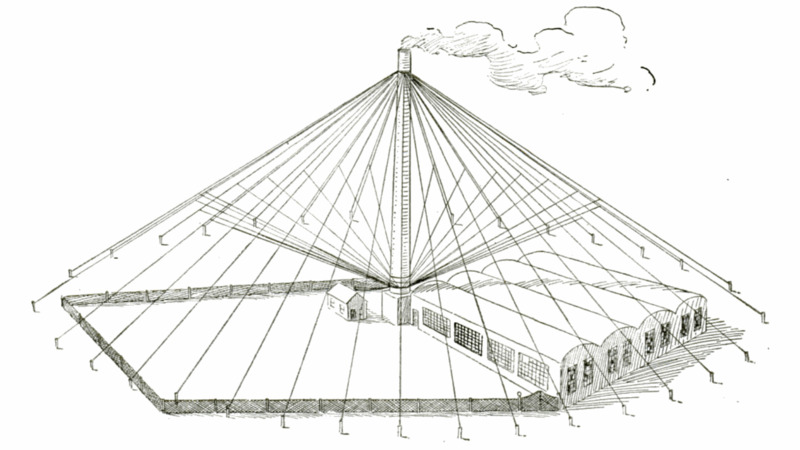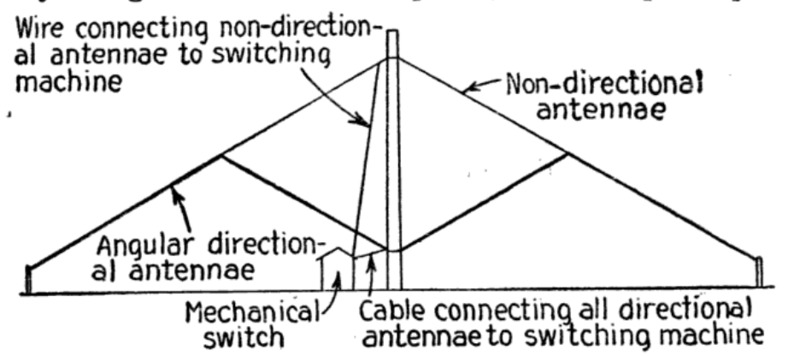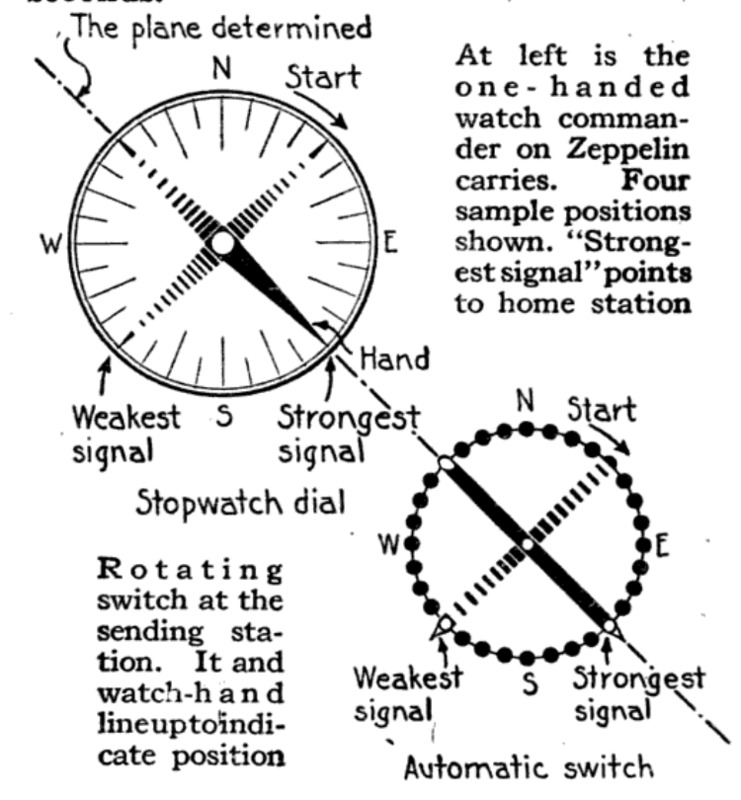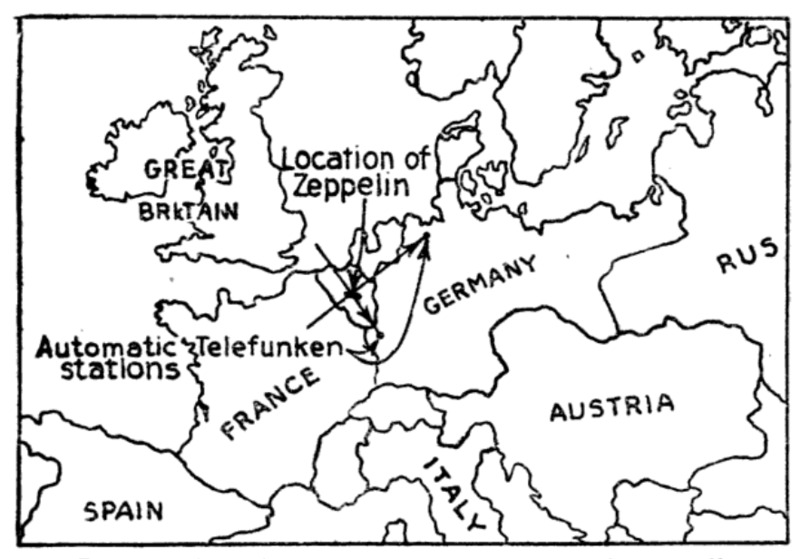-
Titolo
-
How the Zeppelin Raiders Are Guided by Radio Signals
-
Article Title and/or Image Caption
-
How the Zeppelin Raiders Are Guided by Radio Signals. An ingenious system not unlike that of the flashing light which guides mariners along the rocky coasts
-
extracted text
-
A ZEPPELIN which is sent from Ger-
many to England on a bomb-drop-
ping expedition must travel by the
shortest route. Only a limited amount
of fuel is carried in order that the load of
bombs may be as great as possible. But
how does the captain of the ship deter-
mine that route? In time of war cities
are darkened and all guiding lights are
extinguished. The stars may help him.
The trouble is that he travels so fast that
he would have to read them at least ten
times as often as would be necessary on
board a ship at sea. Again, the sky may |
be overcast with no stars visible at all, |
although a war Zeppelin capable of flying
four miles high could escape by rising
above the clouds.
This is very plausible to the lay mind,
but perhaps too far from the real facts. |
Actually the darkening of cities has never
prevented finding the route. Rather in-
visibility of the ground due to “thick” air
or actual fog, has. Even then a fairly |
true course might be steered by ‘‘dead
reckoning”; i. e., by computing distance
and direction from log and compass, and
then tracing the results on the map.
But the unknown and variable wind-drift
prevents this. Measuring the earth's
magnetism would prevent getting far
astray, but the needed apparatus would be
heavy, measurements must be very
numerous, and each measurement means
extremely difficult and accurate work.
Radio communication was soon found
to offer by far the most convenient solu-
tion of the problem. The L-49, which
recently fell into the hands of the French
absolutely intact, had a marvelously com-
plete radio equipment. Even before the
war, a passenger Zeppelin, the Vikioria-
Luise, kept in continuous communication
with the Island of Nordeney in the North
Sea while scouting near Strassburg on the
upper Rhine. That was in 1912. Since
then the range of a Zeppelin’s radio ap-
paratus has been trebled.
On page 451 and following of the March
1916 number, POPULAR SCIENCE took up
and discussed at considerable length two
radio directional systems, the Bellini-Tosi
and the Telefunken, by which ships at sea
could find their way along coasts and into
harborsin spite
of fog or blind-
ing storms. It
is this appara-
tus which has
evidently been
adapted exten-
sively to war
Zeppelins.
In wireless,
parallel anten-
nae give the
stroncest Sig-
nals; those at right angles, the weakest.
It is this principle which makes all radio
direction-finding possible.
In the Bellini-Tosi system the moving
station sends signals to a fixed station, and
the fixed station, by special apparatus, de-
termines the direction of the sender and
thereupon transmits the information to
the sender by radio. Under the Tele-
funken_ plan, the moving station deter-
mines its own position, powerful signals
having been sent. out from fixed stations
along shore. This seems to be the better
arrangement, as it is more practicable to
have powerful stations on shore than
aboard an airship. The signals can
radiate out over longer distances, the
sending station can be entirely automatic,
and on board the airship the commander
need only listen for loudest signals (or
weakest, whichever he prefers), hold a one-
handed stop-watch— hereafter describod
—in his hand, and he gets his direction
almost at once. No doubt the many
war Zeppelins which have ventured
out over England have used this system.
Details of the whole plan are interesting.
The powerful sending stations in Ger-
‘many have thirty-two very long, slanting
antennae radiating from a tall central
mast. These antennae are the exact
equivalents of the rays to be found on
every ship's compass, and, like them,
represent the thirty-two fixed points of
the compass. A mechanically operated
switch connects with opposite pairs of
these separate aerials once every thirty
seconds. A single telegraphic dot is
flashed out at each connection. In this
way all points of the compass are reached
every half-minute.
Any German aircraft, whether it is a
Zeppelin or a small reconnaissance bi-
plane, is able to pick up these dots, and by
this means it
can determine
its direction
relative to
the sending
station. No
other addition
to its regular
receiving appa-
ratus is re-
quired. How-
ever a
calibrated
pocket stop watch must be referred to.
By “calibrated” we mean that the hand of
the watch runs like the previously de-
scribed switch, and that it makes a
complete revolution around the dial in
thirty seconds. The dial is, of course,
marked like that of a navigator’s com-
pass with the usual thirty-two points
instead of with ordinary minutes and
seconds.
Apparently the Zeppelins using the
Telefunken-compass are equipped with
ordinary non-directional aerials for re-
ceiving the signals.
In actual operation the sending station
mechanically rotates its switch and sends
its dots as continuously as a lighthouse
with a rotating lantern flashes out beams
of light. But there is a short stop before
each new rotation, which commences with
the first dot flashed by the north-pointing
antenna. During this short stop an-
other but different signal is sent—a non-
directional signal which is flashed over
all the antennae and which is heard
clearly and loudly in any direction. This
signal identifies a station by giving its
name or its number and supplies the in-
formation that in another moment an-
other cycle of dots will be sent out
toward east, south, and west, commencing
at the north. The aircraft commander
thereupon sets the hand of his stop watch
to the north. He may press the starting
button as soon as he hears the first dot,
and the stopping button as soon as he
hears the weakest dot, or he may press the
button at the strongest dot. In actual
practice, he pushes the button at the dot
immediately following the weakest (or
strongest) signal. The difference in loud-
ness is considerable from dot to dot.
Indeed, the loudness progresses or de-
creases around the circle of the compass,
depending upon the direction in which one
reads.
Imagine what a sensation it must be to
be up in a Zeppelin high over an impene-
trable cloud bank, the sky overhead
obscured by the bulk of the gas bag, and
for these reasons all the landmarks by
which a man ordinarily locates himself
obscured. Yet from somewhere beyond
the clouds beneath comes that clear radio
call indicating that in this direction at
least lies a home station. The beacon is
welcome. All the Zeppelin commander
needs to do now is to tune a bit differently
and go through the same performance
with another automatic station. In a
minute or two he has read on his
stop watch dial his direction rela-
tive to two different stations
whose identity he knows. Drawing
lines in these two directions from
the locations of these stations on
his map, he sees his own location
plainly marked on the same map at
the point where both lines intersect.
More he could hardly demand.
But he may repeat the procedure
many times in order to check up
his location as frequently as the
rapid progress of his craft demands.
In peace time the range was in-
tentionally cut down to fifty miles
in order to prevent interference
with regular wireless traffic. But
in war, especially during a raid, a vastly
greater amount of current may pass
through the switches and the antennae
may be worked to full capacity.
Although the Zeppelin's long range
Telefunken compass uses the same theo-
retical principles as the Bellini-Tosi
method; that is, that parallel aerials
result in loudest signals, the Bellini-Tosi
method is apparently ill-adapted to Zep-
pelins. The Telefunken plan seems prob-
ably the one universally used.
-
Lingua
-
eng
-
Data di rilascio
-
1918-04
-
pagine
-
632-634
-
Diritti
-
Public domain
-
Archived by
-
Filippo Valle
-
Alberto Bordignon (Supervisor)








